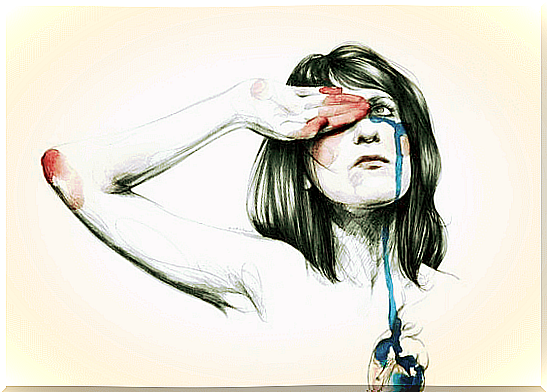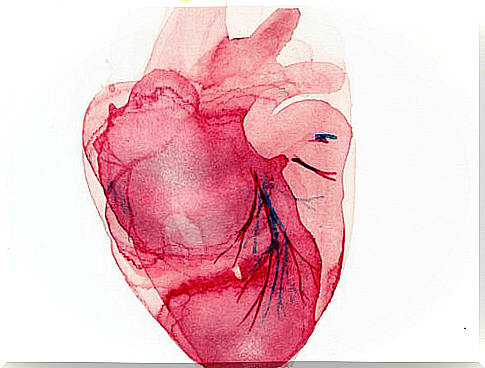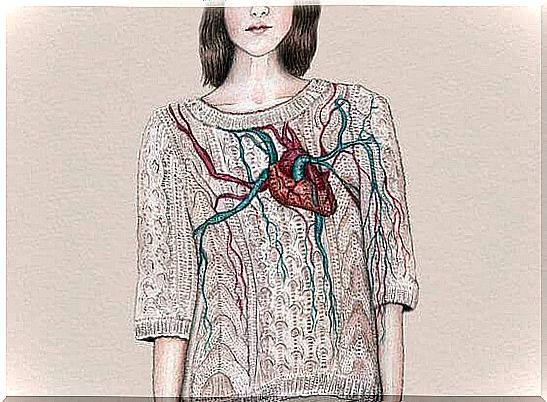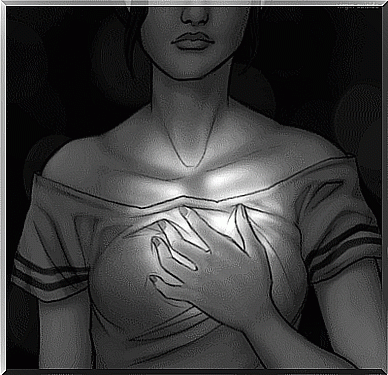Broken Heart Syndrome: Very Common In Women

Losing a loved one or suffering a severe disappointment can literally break our hearts. We are talking about Takotsubo cardiomyopathy, or broken heart syndrome, a type of pathology that, more than breaking this organ, deforms it. A painful brand that has little poetic and has a favorite genre: the woman.
Currently, broken heart syndrome is not very well known. It is also not clear why almost 95% of diagnosed cases belong to the female gender. However, the prevalence exists and we cannot close our eyes to an evident reality. The emotional world impacts, sometimes, like a lash straight to the heart. No mercy. It makes us think we’re going to lose our lives, although luckily that doesn’t usually happen.
It is estimated that between 1 and 2 percent of women diagnosed with a heart attack actually suffer from broken heart syndrome. It is a disease that can be perfectly visualized in diagnostic tests, because the heart is temporarily deformed on its left side. It is the obvious mark of that moment when stress becomes harmful in the body and molds in our own organs, like a good craftsman, the mark of pain.
It’s important to know your triggers and delve a little deeper into Takotsubo cardiomyopathy. We invite you to find out more about the subject.

The broken heart syndrome, when metaphor becomes reality
If the sound of broken hearts were audible, it would likely turn into a sad soundtrack very common in our daily lives. But despite the fact that most people have experienced this sensation at some point, what causes Takotsubo cardiomyopathy is something more delicate, deeper and, at the same time, complex.
When we talk about heart problems, we tend to associate them almost automatically with men. If this is so, it is for a very simple reason. Hormones protect – to some extent – women’s hearts for most of their lives, making them more resilient. But not invulnerable. However, after menopause this small defensive barrier falls and the heart begins to be less resistant to stress, anxiety…
Many of these enemies silently installed in our minds and bodies weaken the emotional fabric. Until one day, all it takes is one disappointment or bad news for this fabric to tear completely. Suddenly, large doses of catecholamines, substances similar to adrenaline, are released. The heart rate shoots up until it causes a little damage to the heart muscle. A deformation.

The heart didn’t break, but almost. The metaphor becomes reality and we feel like we are dying. Symptoms are similar to myocardial infarction, however, patients are usually discharged within 3 to 4 days. The heart shrinks, screams silently, but recovers. Treatment with beta-blockers is always effective and there are no sequelae. But no one guarantees that we will not experience the broken heart syndrome again…
Taking care of the heart also means taking care of the emotions
As we pointed out at the beginning, the broken heart syndrome does not have much scientific documentation. It was first described in the 1990s in Japan. It is also known to be more frequent in summer or spring, in women who have already reached menopause.

Symptoms of broken heart syndrome
The symptoms of broken heart syndrome are:
- Takotsubo cardiomyopathy has no previous symptoms. It appears like a heart attack, with the same intensity and with the same pain.
- It always appears in a context of intense stress, when receiving bad news or when the person literally feels overwhelmed.
- Arrhythmias, heart failure, dizziness and severe and devastating pressure in the chest appear.
Managing emotions to take care of the heart
The female mind, in general, tends to have a small flaw: it prioritizes the emotions of others over its own. In his zeal for protection and attention, he will always put his energies into his family, his children, his partner… Little by little, his worries and this delicate emotional world are transformed into a black hole that, sooner or later, implodes.
Therefore, it is necessary to reflect on the following aspects:
- Don’t put off for tomorrow what worries you today. Drain your emotions day by day. Few exercises are as liberating as releasing what’s oppressing you, as letting go of what’s burning inside.
- We cannot and must not solve everything around us. Keeping everyone satisfied is a very destructive focus of stress.
- Broken heart syndrome often comes after a severe emotional impact. It is clear that no one can be prepared to face a loss, a separation, a hard disappointment.
- However, what we can do is to establish good “grounds” within ourselves so that this impact “does not break us”. Looking to face it with the flexibility of materials that, when impacted, are soon able to recover their original shape.
Make time for yourself, exercise moderately, practice yoga, and prioritize who you are : the most important person in your life. Make your heart your best weapon in these complex times. In these environments where there is only one thing: joining forces to conquer their own happiness, their own inner peace.
Image ported courtesy Paula Bonet







